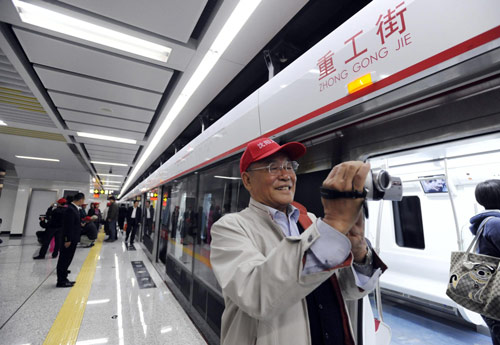Society
Urbanization could cost 24 trillion yuan
By Xin Zhiming (China Daily)
Updated: 2010-09-23 08:00
 |
Large Medium Small |
 |
|
A resident in Shenyang, capital of Northeast China's Liaoning province, takes pictures of the carriages of the city's first subway line in the city, September 22, 2010. More than 100 local residents were invited to experience the line's trial run that day. [Xinhua] |
BEIJING - China may need to invest up to 24 trillion yuan ($3.6 trillion) in urban infrastructure by 2020 to accommodate the increasing number of rural residents moving to the cities, according to a new report by a government think tank.
China's urbanization rate is currently around 47 percent and is increasing by about 1 percentage point each year. If the nation continues its urbanization-friendly policies, the rate could rise to 65 percent by 2020, according to the report released on Tuesday by the China Development Research Foundation.
"If the ratio of urban infrastructure investment to the country's gross domestic product reaches 4 percent, which is the average rate in developing countries, then the total investment could amount to 24 trillion yuan."
New transportation networks, including roads, bridges and subways, will account for about 56 percent of the estimated investment, the report said.
Financing the expected urban expansion poses a major challenge.
The report said that in 2008, about 32 percent of the funding for urban infrastructure came from the government, 30 percent from bank loans and the remainder from the relevant enterprises. However, at present, all local government finance channels rely on land prices, as they either sell land to raise money or use land to secure loans.
Such a financing model will not be sustainable, the report concludes. Once the property market cools, it will have a detrimental effect on the ability of local governments to raise funds.
To meet the projected financing requirements, the report suggests non-State investors should provide a larger proportion of funds for future urban infrastructure projects.




